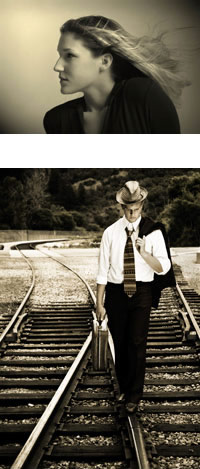Black and White Photography

Black-and-white (monochrome) is the oldest form of photography — originally all photos were black and white. These days it is a lot less common but still maintains a strong following.
Monochrome is more than the absence of colour. Black-and-white photos have a style of their own, usually quite dramatic. A good black-and-white photographer knows how to use this format to maximise the impact of shapes, textures and tones.
Taking Black-and-White Photos
Although some cameras have a black-and-white function, it's best to shoot in colour and convert to monochrome using photo editing software. This gives you more control over the image as you can use information from any or all the colour channels.
Use RAW format and work in 16-bit mode or higher. This provides maximum flexibility and makes adjustments less prone to artifacts.
Shoot with a low ISO. Noise created by ISO is more obvious in monochrome than colour.
When composing shots, learn to ignore colour and see the picture without it. However it is worth experimenting with photographing colours and converting them to monochrome. You will find that certain colours, especially high-contrast colours, do have different effects in black-and-white.
Concentrate on tones (shadows, highlights) as well as shapes and textures. Textures are particularly important and can add a lot of impact.
You may find low-contrast lighting conditions to be favourable for monochrome photography. If you normally shoot in colour but don't like the light on a particular day, take the opportunity to try black-and-white.